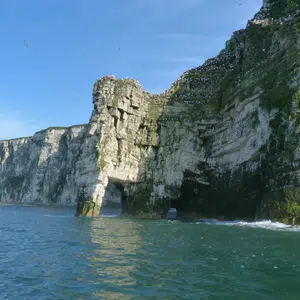Fisheries
The culture and identity of the Yorkshire coast is intrinsically linked with our fishing heritage; small fishing villages nestled around natural harbours, the unique design of local boats, and the fishing practices, traditions and folklore that have been passed down the generations. Whilst the fishing fleets may be smaller than they once were, there is still a thriving fishing industry on the Yorkshire coast.
The main fishing ports of Whitby, Scarborough and Bridlington are interspersed by smaller harbours and landing sites, where traditional methods are still used to catch a range of species. The coastal fishery is dominated by shellfish, with Bridlington known by many as the ‘lobster capital of Europe’. Some vessels still use traditional netting to target pelagic fish, such as sea trout, either from the shore or small inshore boats, whilst others fish for deep water species using various different techniques
The North Eastern Inshore Fisheries and Conservation Authority (NEIFCA) manage commercial and recreational fisheries out to six nautical miles, from the River Tyne to the south bank of the Humber Estuary. The NEIFCA’s role is to manage sea fisheries resources; championing sustainability and working in partnership to conserve protected areas and sensitive species. Much of this management is achieved through measures such as minimum landing sizes, net and fishing gear regulations and restricted areas. NEIFCA are also responsible for enforcing the Flamborough Head No Take Zone.
Working alongside the NEIFCA, the Marine Management Organisation (MMO) regulates fisheries offshore (between six and 12 nautical miles), sets the UK’s fishing quotas, enforces national fisheries legislation and plays a key role in the designation and management of Marine Protected Areas and the preparation of marine plans.
You may also be interested in…



